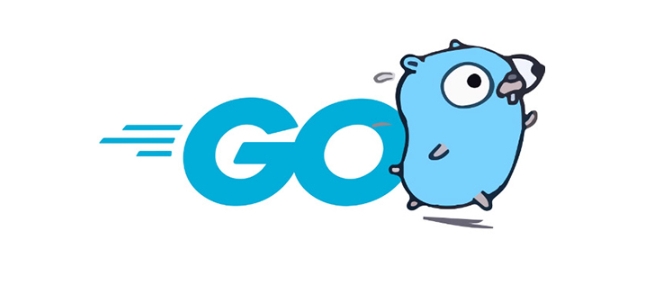Qu'est-ce que Golang et pourquoi est-il utilisé?
Jul 31, 2025 am 10:35 AMGo was created to address slow build times, complex codebases, and concurrency challenges in large-scale systems. 1. It offers simplicity and readability with minimal syntax, reducing cognitive load. 2. It provides excellent concurrency support via goroutines and channels, enabling efficient handling of thousands of concurrent operations. 3. It ensures fast compilation and execution by compiling to machine code and producing dependency-free static binaries. 4. It includes a strong standard library for common tasks like HTTP, JSON, and cryptography, reducing third-party dependencies. 5. It comes with built-in tooling such as go fmt, go mod, and go test, promoting consistency and productivity. Go is commonly used in cloud and network services (e.g., Docker, Kubernetes), CLI tools, high-performance APIs, and DevOps infrastructure. Major companies like Google, Uber, Twitch, and Netflix use Go for its performance, scalability, and reliability in modern cloud environments. In summary, Go is ideal for building scalable, efficient backend systems in distributed environments, offering high performance, simple deployment, and robust tooling, making it a top choice for microservices and infrastructure projects.

Go, often referred to as Golang, is a statically typed, compiled programming language developed by Google in 2007 (officially released in 2009) by Robert Griesemer, Rob Pike, and Ken Thompson. Despite the nickname "Golang," the official name is just Go — the "lang" part comes from its domain, golang.org.

Why Was Go Created?
Go was designed to solve real-world engineering challenges Google faced: slow build times, complex codebases, and the need for efficient concurrency in large-scale distributed systems. The goal was to combine the simplicity and readability of dynamic languages (like Python) with the performance and safety of compiled languages (like C++), while also improving developer productivity and system scalability.
Key Features That Make Go Popular
1. Simplicity and Readability
Go intentionally avoids complex features like inheritance, method overloading, or generics (though added later in Go 1.18). Its syntax is clean and minimal, making code easy to read and maintain.

Example: A basic "Hello, World!" in Go:
package main import "fmt" func main() { fmt.Println("Hello, World!") }
This simplicity lowers the learning curve and reduces the cognitive load when working on large teams.

2. Excellent Support for Concurrency
Go has built-in language features for handling concurrent operations — goroutines and channels.
- Goroutines are lightweight threads managed by the Go runtime.
- Channels allow safe communication between goroutines.
This makes Go ideal for building scalable network services and microservices.
Example:
go doSomething() // runs concurrently
You can launch thousands of goroutines with minimal overhead — something hard to do efficiently in many other languages.
3. Fast Compilation and Execution
Go compiles directly to machine code, so it runs fast — much faster than interpreted languages. It also compiles very quickly, which improves developer iteration speed.
Plus, Go produces single static binaries with no external dependencies, making deployment simple and reliable across different environments.
4. Strong Standard Library
Go comes with a robust standard library that includes powerful packages for:
- HTTP servers and clients
- JSON/XML handling
- Cryptography
- File I/O
- Testing (
go testand built-in coverage tools)
This reduces reliance on third-party libraries for common tasks.
5. Built-in Tooling
Go includes excellent tooling out of the box:
-
go fmt– enforces consistent code formatting -
go mod– dependency management -
go vet– static analysis -
go run,go build,go test– straightforward commands
These tools promote consistency and reduce configuration overhead.
Where Is Go Commonly Used?
? Cloud and Network Services
Many cloud-native tools are built in Go:
- Docker
- Kubernetes
- Prometheus
- Terraform
- Etcd
Its efficiency, concurrency model, and fast startup time make it perfect for microservices and containerized environments.
? CLI Tools
Because Go compiles to a single binary, it's great for building cross-platform command-line tools that are easy to distribute.
? High-Performance Backend APIs
Go is widely used for RESTful APIs and backend services where low latency and high throughput matter.
? DevOps and Infrastructure Tools
Go’s performance and system-level access make it suitable for infrastructure automation, monitoring, and orchestration tools.
Who Uses Go?
Big tech companies using Go include:
- Google (original creator)
- Uber
- Twitch
- Dropbox
- Netflix
- Shopify
It’s especially popular in startups and scale-ups building modern cloud infrastructure.
Summary: Why Use Go?
Here’s a quick list of why developers and companies choose Go:
- ? High performance – compiled to machine code, efficient runtime
- ? Simple and readable syntax – easier to learn and maintain
- ? Excellent concurrency support – goroutines and channels
- ? Easy deployment – single binary, no external dependencies
- ?? Great standard library and tooling – batteries included
- ?? Ideal for modern cloud applications – used heavily in DevOps and microservices
Basically, if you're building scalable, reliable, and efficient backend systems — especially in a cloud environment — Go is a strong, modern choice. It’s not always the best for everything (e.g., GUI apps or AI/ML), but for network services and infrastructure, it shines.
Ce qui précède est le contenu détaillé de. pour plus d'informations, suivez d'autres articles connexes sur le site Web de PHP en chinois!

Outils d'IA chauds

Undress AI Tool
Images de déshabillage gratuites

Undresser.AI Undress
Application basée sur l'IA pour créer des photos de nu réalistes

AI Clothes Remover
Outil d'IA en ligne pour supprimer les vêtements des photos.

Clothoff.io
Dissolvant de vêtements AI

Video Face Swap
échangez les visages dans n'importe quelle vidéo sans effort grace à notre outil d'échange de visage AI entièrement gratuit?!

Article chaud

Outils chauds

Bloc-notes++7.3.1
éditeur de code facile à utiliser et gratuit

SublimeText3 version chinoise
Version chinoise, très simple à utiliser

Envoyer Studio 13.0.1
Puissant environnement de développement intégré PHP

Dreamweaver CS6
Outils de développement Web visuel

SublimeText3 version Mac
Logiciel d'édition de code au niveau de Dieu (SublimeText3)

Sujets chauds
 Golang vs C: Performance et comparaison de la vitesse
Apr 21, 2025 am 12:13 AM
Golang vs C: Performance et comparaison de la vitesse
Apr 21, 2025 am 12:13 AM
Golang convient au développement rapide et aux scénarios simultanés, et C convient aux scénarios où des performances extrêmes et un contr?le de bas niveau sont nécessaires. 1) Golang améliore les performances grace à des mécanismes de collecte et de concurrence des ordures, et convient au développement de services Web à haute concurrence. 2) C réalise les performances ultimes grace à la gestion manuelle de la mémoire et à l'optimisation du compilateur, et convient au développement du système intégré.
 Golang et C: concurrence vs vitesse brute
Apr 21, 2025 am 12:16 AM
Golang et C: concurrence vs vitesse brute
Apr 21, 2025 am 12:16 AM
Golang est meilleur que C en concurrence, tandis que C est meilleur que Golang en vitesse brute. 1) Golang obtient une concurrence efficace par le goroutine et le canal, ce qui convient à la gestion d'un grand nombre de taches simultanées. 2) C Grace à l'optimisation du compilateur et à la bibliothèque standard, il offre des performances élevées près du matériel, adaptées aux applications qui nécessitent une optimisation extrême.
 Golang vs Python: performance et évolutivité
Apr 19, 2025 am 12:18 AM
Golang vs Python: performance et évolutivité
Apr 19, 2025 am 12:18 AM
Golang est meilleur que Python en termes de performances et d'évolutivité. 1) Les caractéristiques de type compilation de Golang et le modèle de concurrence efficace le font bien fonctionner dans des scénarios de concurrence élevés. 2) Python, en tant que langue interprétée, s'exécute lentement, mais peut optimiser les performances via des outils tels que Cython.
 L'avenir de C: adaptations et innovations
Apr 27, 2025 am 12:25 AM
L'avenir de C: adaptations et innovations
Apr 27, 2025 am 12:25 AM
L'avenir de C se concentrera sur l'informatique parallèle, la sécurité, la modularisation et l'apprentissage AI / Machine: 1) L'informatique parallèle sera améliorée par des fonctionnalités telles que les coroutines; 2) La sécurité sera améliorée par le biais de mécanismes de vérification et de gestion de la mémoire plus stricts; 3) La modulation simplifiera l'organisation et la compilation du code; 4) L'IA et l'apprentissage automatique inviteront C à s'adapter à de nouveaux besoins, tels que l'informatique numérique et le support de programmation GPU.
 MySQL vs d'autres langages de programmation: une comparaison
Apr 19, 2025 am 12:22 AM
MySQL vs d'autres langages de programmation: une comparaison
Apr 19, 2025 am 12:22 AM
Par rapport à d'autres langages de programmation, MySQL est principalement utilisé pour stocker et gérer les données, tandis que d'autres langages tels que Python, Java et C sont utilisés pour le traitement logique et le développement d'applications. MySQL est connu pour ses performances élevées, son évolutivité et son support multiplateforme, adapté aux besoins de gestion des données, tandis que d'autres langues présentent des avantages dans leurs domaines respectifs tels que l'analyse des données, les applications d'entreprise et la programmation système.
 Golang vs Python: différences et similitudes clés
Apr 17, 2025 am 12:15 AM
Golang vs Python: différences et similitudes clés
Apr 17, 2025 am 12:15 AM
Golang et Python ont chacun leurs propres avantages: Golang convient aux performances élevées et à la programmation simultanée, tandis que Python convient à la science des données et au développement Web. Golang est connu pour son modèle de concurrence et ses performances efficaces, tandis que Python est connu pour sa syntaxe concise et son écosystème de bibliothèque riche.
 Golang contre Python: les avantages et les inconvénients
Apr 21, 2025 am 12:17 AM
Golang contre Python: les avantages et les inconvénients
Apr 21, 2025 am 12:17 AM
GolangisidealforBuildingsCalableSystemsDuetoitSefficiency and Concurrency, tandis que les Implicites de l'Indrecosystem et le Golang'sDesignenCourageSlecElNCORES
 Golang vs Python: concurrence et multithreading
Apr 17, 2025 am 12:20 AM
Golang vs Python: concurrence et multithreading
Apr 17, 2025 am 12:20 AM
Golang convient plus à des taches de concurrence élevées, tandis que Python présente plus d'avantages dans la flexibilité. 1. Golang gère efficacement la concurrence par le goroutine et le canal. 2. Python repose sur le filetage et l'asyncio, qui est affecté par GIL, mais fournit plusieurs méthodes de concurrence. Le choix doit être basé sur des besoins spécifiques.






